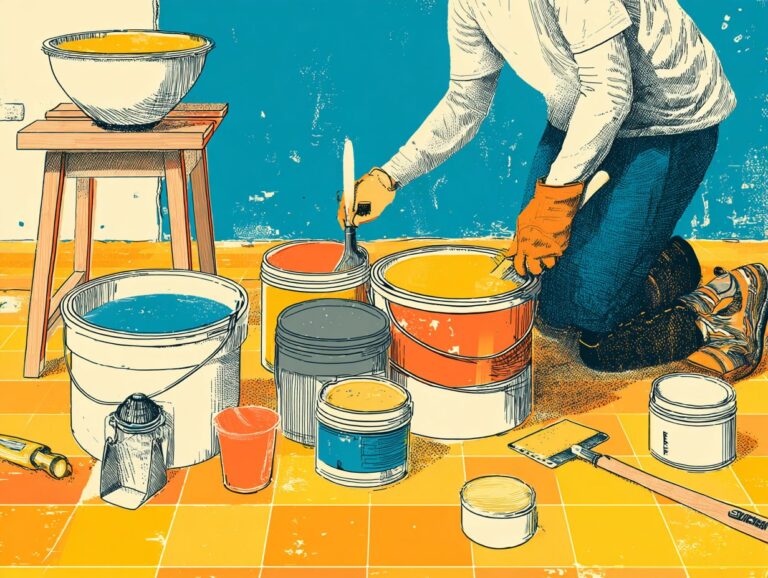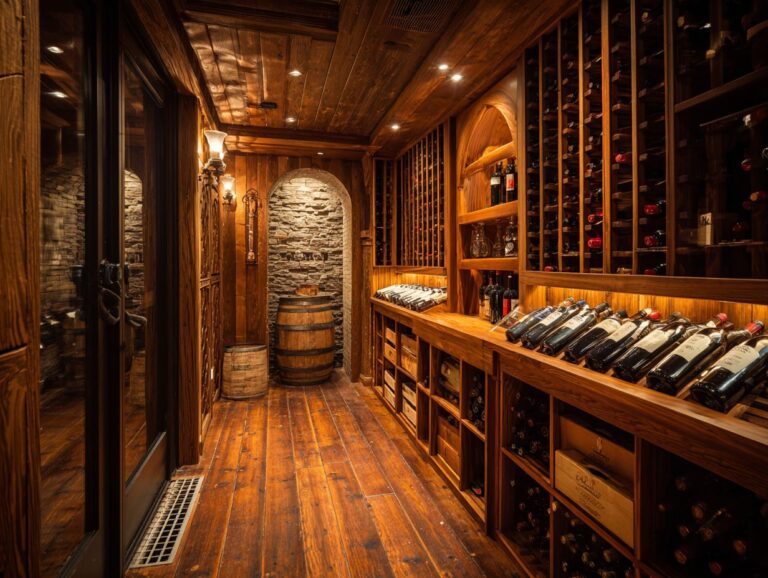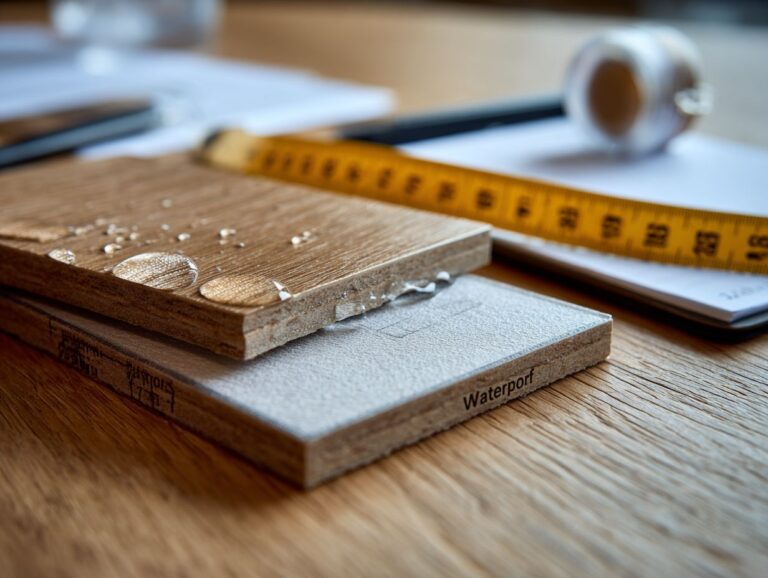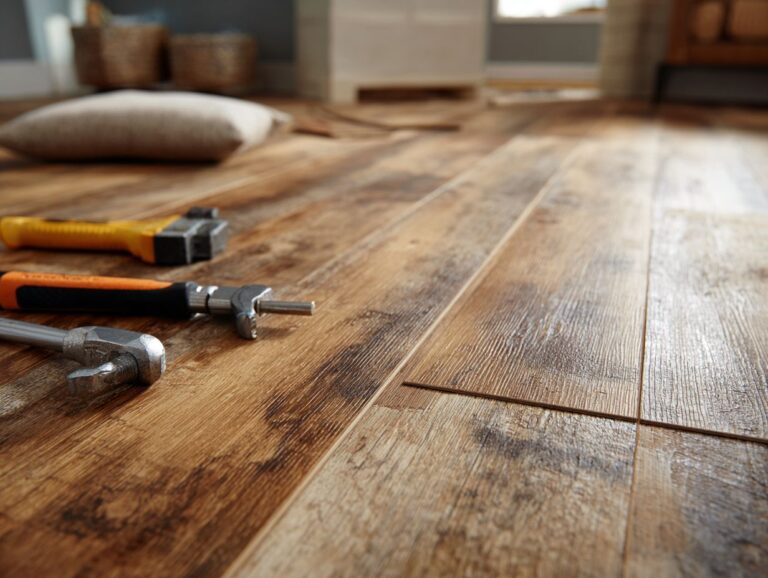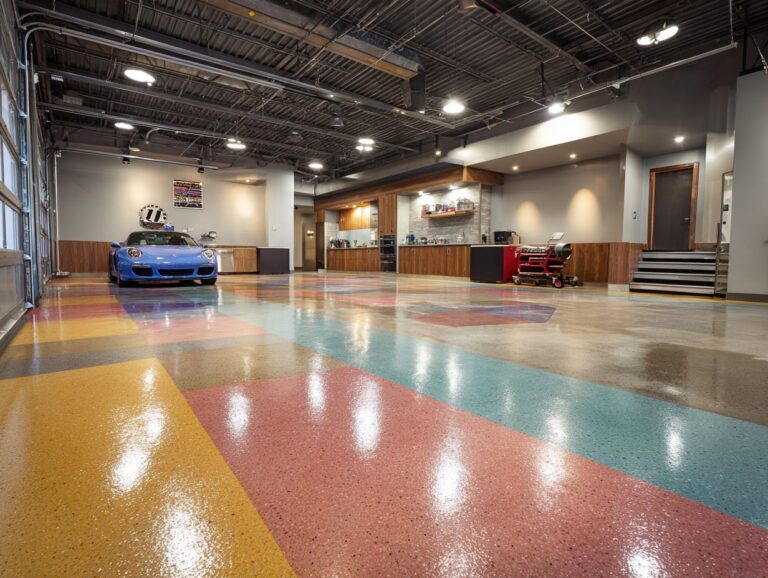Porcelain vs Ceramic Tile – Composition, Cost & Durability
Selecting porcelain or ceramic tile for your floor can be challenging. Knowing how they differ in makeup, price, and strength can simplify the decision. While Avalon offers a range of stunning options, knowing that porcelain tiles tend to be more durable and low maintenance compared to ceramic tiles can guide your decision. In this article, we will look at the key features of both tile types to help you decide which is best for your area.
Key Takeaways:
Contents
- Composition of Porcelain and Ceramic Tiles
- Cost Comparison
- Global Tile Market Analysis
- Durability of Porcelain vs Ceramic Tiles
- Applications and Suitability
- FAQs about Porcelain and Ceramic Tiles
- Frequently Asked Questions
- What is the difference between porcelain and ceramic tile in terms of composition?
- Which type of tile is more expensive, porcelain or ceramic?
- How do porcelain and ceramic tiles differ in terms of durability?
- Can both porcelain and ceramic tiles be used for outdoor installations?
- Are there any differences in how porcelain and ceramic tiles are installed?
- Which type of tile is more suitable for high-moisture areas such as bathrooms and kitchens?
Definition of Porcelain Tiles
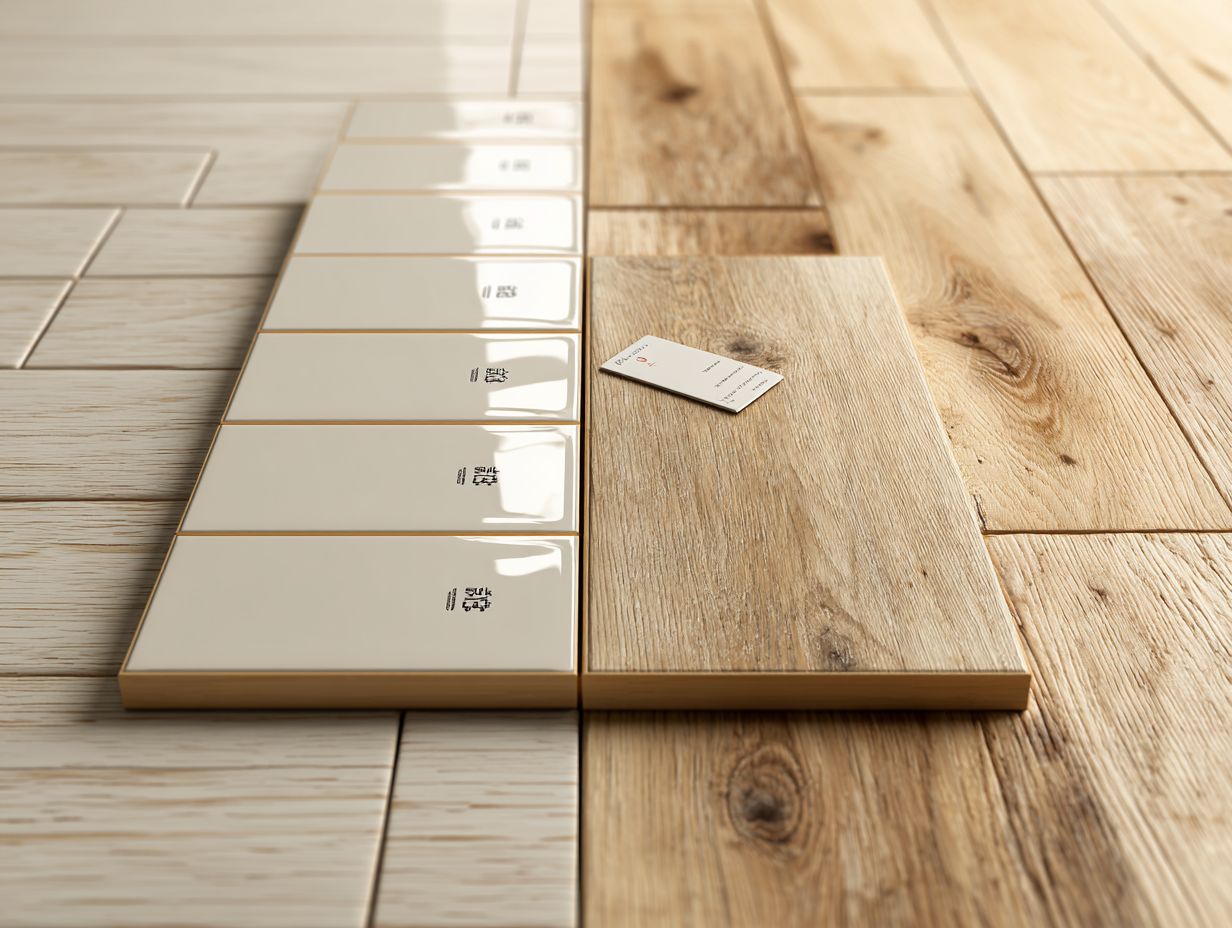
Porcelain tiles are dense ceramic tiles that are fired at high temperatures, resulting in a durable product ideal for both residential and commercial spaces.
These tiles do not absorb much moisture, so they resist stains and are perfect for places like bathrooms and kitchens. Their aesthetic versatility allows for various designs, ranging from classic marbles to contemporary patterns, which means they can complement any decor style.
For installation, think about using products like Thinset mortar for solid bonding or grout sealers to make it last longer.
Properly maintained, porcelain tiles can withstand heavy foot traffic and resist scratches, ensuring they remain visually appealing for years.
Definition of Ceramic Tiles
Ceramic tiles are created using clay and other natural materials. They come in various designs and are budget-friendly, which makes them a favorite among homeowners.
These tiles come in various styles, colors, and finishes, enabling you to match any interior or exterior decor. They are often used in kitchens and bathrooms due to their resistance to moisture and easy maintenance.
For example, a glossy ceramic tile can add a modern touch to a kitchen backsplash, while textured tiles are perfect for outdoor patios.
Tiles measuring 12×12 inches can be bought for around $1-$3 per square foot, providing an affordable option for those updating their spaces.
Composition of Porcelain and Ceramic Tiles
Knowing what makes up porcelain and ceramic tiles is important because it affects how well they work, how long they last, and how you care for them. If you are interested in the differences between flooring types, you might appreciate our guide on Luxury Vinyl Plank vs Luxury Vinyl Tile, which explores materials and durability.
Main Materials Used in Porcelain Tiles
Porcelain tiles are primarily made from kaolin, feldspar, and other natural clays, which contribute to their strength and water resistance.
These materials are baked at high temperatures, which makes them stronger and reduces how much moisture they absorb. The use of additives like quartz can further increase strength.
Buying from companies like Avalon or Hyperion Tiles helps to support eco-friendly methods, as they often use recycled materials.
For the best results, choose tiles with a water absorption rate below 0.5%. This will help them last longer in places that often get wet, like bathrooms or kitchens.
Main Materials Used in Ceramic Tiles
Ceramic tiles are usually made from red or white clay and have a glaze that makes them look nice and helps prevent staining.
Red clay is often used in a range of rustic, terracotta tiles, while white clay is preferred for finer, denser options, leading to a smoother finish.
The glaze, available in matte, shiny, or textured finishes, is used to improve color and strength. Manufacturers such as Hyperion Tiles often use special mixtures and their own glazing methods to create particular designs and meet certain performance criteria.
Different looks and uses mean it’s important to think about these details when choosing tiles for things like floors or walls.
Differences in Firing Processes
The firing processes of porcelain and ceramic tiles differ significantly, with porcelain being fired at higher temperatures, leading to a denser and more durable product.
Porcelain tiles are usually baked at temperatures between 1,200 and 1,450 degrees Celsius. This process gives them a water absorption rate of less than 0.5%, which makes them perfect for outdoor spaces and wet areas.
In contrast, ceramic tiles are fired at lower temperatures, around 1,000 to 1,200 degrees Celsius, leading to higher water absorption rates of 3-7%. Consequently, porcelain tiles exhibit greater durability and resistance to chipping and cracking, which is why they are often preferred for high-traffic areas and installations that require long-lasting performance.
Cost Comparison
Price is an important consideration when choosing between porcelain and ceramic tiles, as it can significantly impact the total cost of home renovation projects.
Global Tile Market Analysis
Global Tile Market Analysis
Market Dynamics: Market Value Growth
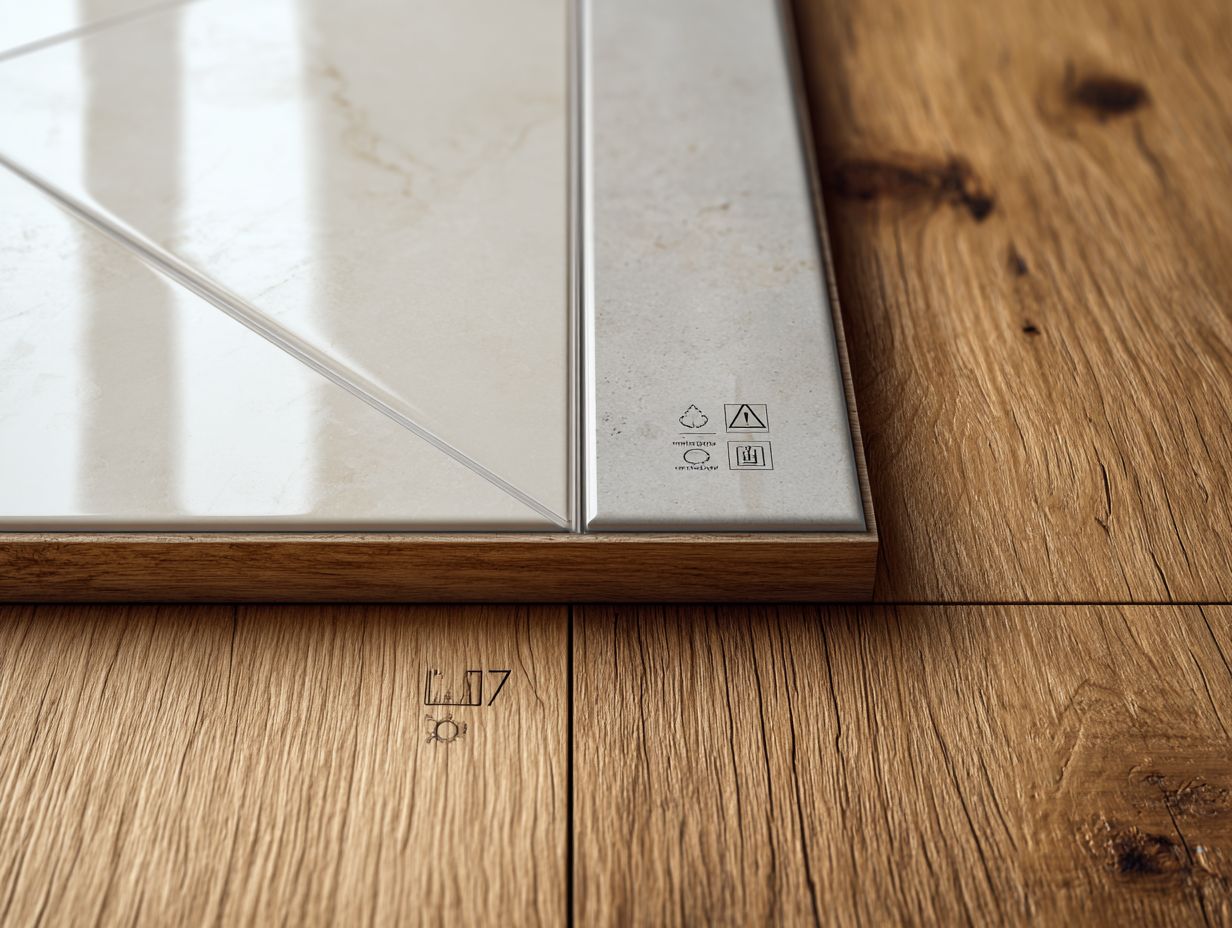
Market Dynamics: Segment Values
Market Dynamics: Regional Market Values
The Global Tile Market Analysis provides a detailed look at the tile industry’s growth and breakdown from 2023 to 2035, focusing on market changes, segment values, and regional market roles. This data provides information on growth patterns, market growth, and chances for different tile types and areas.
Market Dynamics indicate that the global tile market’s value is set to grow significantly from $255.47 billion in 2023 to $262.26 billion in 2024, with expectations to reach $350 billion by 2035. This trend shows a strong yearly growth rate of 2.66% from 2025 to 2035, driven by increased construction activities, renovation projects, and consumer preference for stylish and durable flooring solutions.
- Segment Values: Among various tile types, ceramic tiles $105 billion in 2024 to $142 billion in 2035. Porcelain tiles $85 billion in 2024 to $112 billion in 2035. Natural stone tiles $45 billion to $55 billion, while vinyl tiles $12.26 billion in 2024 to $21 billion in 2035. This diversification reflects consumer demand for various styles and functionalities, with each material offering unique benefits in terms of aesthetics, durability, and cost.
- Regional Market Values: The Asia-Pacific $100 billion, indicating strong demand due to urbanization and infrastructural developments. In North America$75 billion in 2024 to $98 billion in 2035, driven by renovation trends and housing developments. Europe $85 billion to $112 billion. South America’s $20 billion to $27 billion, while the Middle East and Africa $17.26 billion to $23 billion by 2035, reflecting rising construction activities and investments in infrastructure.
The Global Tile Market Analysis shows a clear view of the industry’s predicted growth, backed by various tile options and expansion across different areas. Companies that want to take advantage of these trends should prioritize new ideas, eco-friendly practices, and changing customer needs to stay competitive in a fast-changing global market.
Average Cost of Porcelain Tiles
The average cost for porcelain tiles ranges from $3 to $10 per square foot, depending on the quality and design, excluding installation costs.
Installation costs typically range from $4 to $10 per square foot, influenced by the complexity of the job and regional labor rates.
For example, installing a basic floor in a suburban area might be cheaper than installing more detailed designs like herringbone patterns, which need more work and careful attention.
Remember to factor in costs for underlayment, grout, and potentially a moisture barrier, which can add another $1 to $3 per square foot.
Get several quotes and look at the overall cost to set an accurate budget.
Average Cost of Ceramic Tiles
Ceramic tiles are typically priced from $1 to $6 per square foot, offering an affordable option for most homeowners.
In comparison, porcelain tiles often cost between $3 and $10 per square foot due to their denser composition and durability. Installation costs for both types vary, typically ranging from $4 to $8 per square foot.
This means a standard 200-square-foot room could see total expenses between $1,000 to $1,500 with ceramic tiles, significantly lower than porcelain. Ceramic tiles are easy to cut and install, making them a practical choice for DIY enthusiasts and potentially reducing labor costs.
Factors Influencing Tile Prices
Tile prices are influenced by factors like material quality, brand reputation, design options, and installation difficulty.
Material quality significantly affects prices, with porcelain and ceramic tiles typically ranging from $1 to $10 per square foot, while natural stone can soar to $15 or more.
Brand reputation also plays a role; for instance, Avalon tiles may come at a premium due to their high-end designs, whereas Hyperion offers budget-friendly alternatives.
Special design choices, like unique shapes or detailed patterns, can increase labor expenses and may double installation charges.
Therefore, when planning your tile projects, think about these factors to calculate the overall costs correctly.
Durability of Porcelain vs Ceramic Tiles
Porcelain tiles are generally stronger than ceramic tiles because they are made with denser materials and fired at higher temperatures.
Water Resistance of Porcelain Tiles
Porcelain tiles hardly soak up water, usually less than 0.5%, which makes them ideal for wet spaces such as bathrooms and kitchens.
To test water resistance, manufacturers typically use the ANSI A137.3 standard, which evaluates water absorption by submerging tiles for 24 hours.
Important performance measurements for checking suitability include the PEI rating for durability and slip resistance, making them suitable for home and business use.
For instance, in a high-traffic restaurant kitchen, porcelain tiles withstand spills and heavy foot traffic, while in a spa-like bathroom, they provide a luxurious, waterproof finish.
Choose unglazed options for additional traction in wet areas.
Water Resistance of Ceramic Tiles
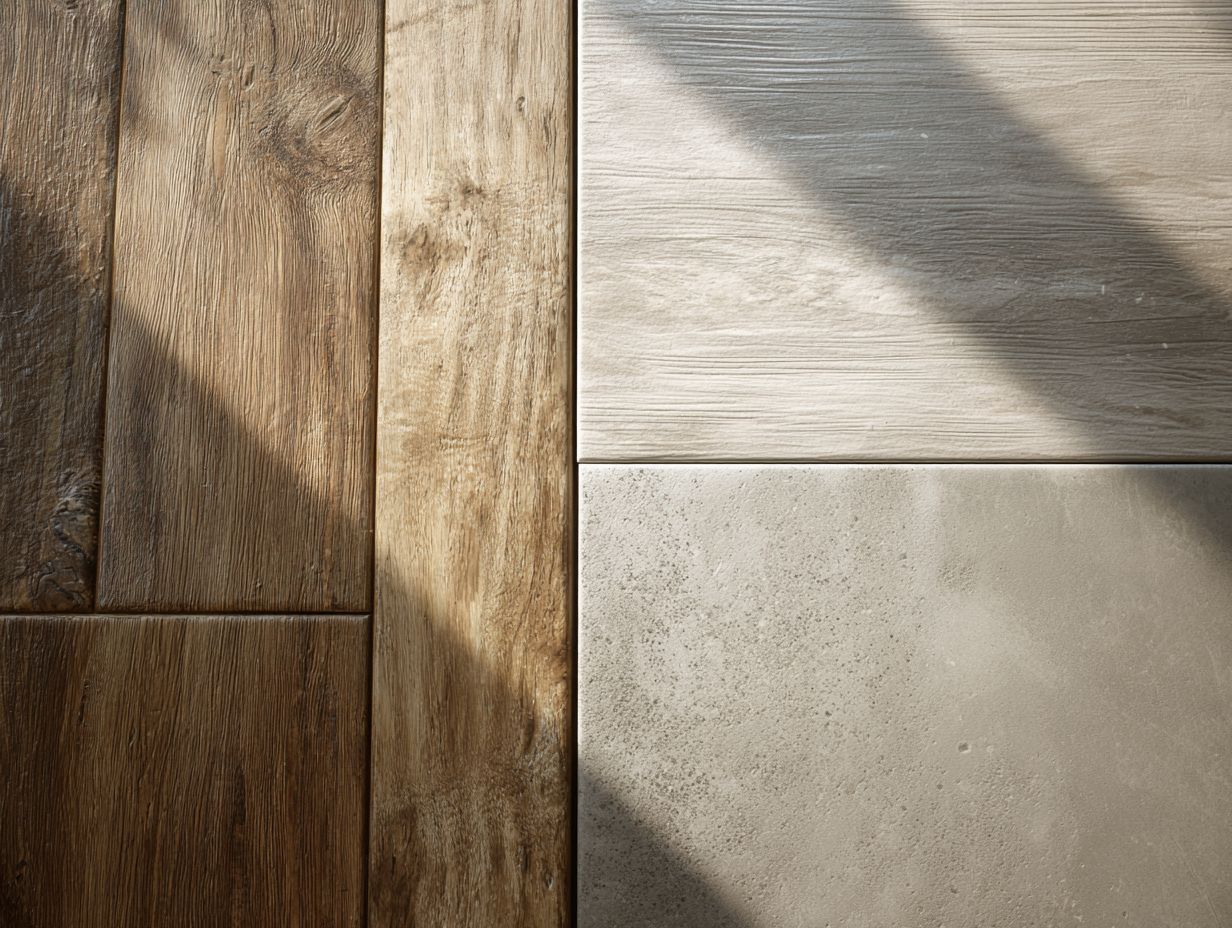
Ceramic tiles typically have a higher water absorption rate, averaging between 3% to 7%, which may limit their use in high-moisture environments without protective sealing.
Porcelain tiles absorb less than 0.5% of water, which makes them ideal for use in bathrooms and kitchens.
To get the best protection, especially in damp areas, seal ceramic tiles with a quality penetrating sealant like Miracle Sealants 511. This reduces absorption and helps stop stains and mold from forming.
To keep it strong and looking nice, reseal it every few years.
Scratch and Chip Resistance
Porcelain tiles are usually less likely to scratch or chip because they are thicker, which makes them a popular option for places with a lot of foot traffic.
This density is reflected in their hardness rating, typically between 7 and 8 on the Mohs scale, compared to ceramic tiles, which usually score around 4 to 5.
For instance, in a kitchen environment, porcelain tiles can withstand the heavy impact of dropped cookware better than their ceramic counterparts.
Many manufacturers, such as Porcelanosa and Marazzi, offer product lines made for commercial settings, which are durable and chip-resistant even under tough conditions.
Selecting high-quality porcelain tiles for areas such as entryways or bathrooms guarantees they last a long time and keep looking good even with regular use.
Longevity and Maintenance
Porcelain tiles typically require less maintenance and boast a longer lifespan than ceramic tiles, often lasting over 50 years with proper care.
Their dense structure makes them more resistant to stains and water, demanding only regular sweeping and mopping with a pH-neutral cleaner.
In contrast, ceramic tiles tend to absorb moisture more readily, increasing the likelihood of staining or damage, especially in high-humidity areas.
To keep ceramic tiles in good shape, you should seal them every few years to stop moisture damage. Porcelain tiles usually don’t need sealing.
If you need repairs, porcelain is tougher to replace because it lasts longer, while ceramic tiles are easier to find and swap out, which makes them more convenient for quick repairs.
Applications and Suitability
Picking the right tile for certain uses can improve looks and practical use in homes and businesses, particularly when considering the differences between materials like Luxury Vinyl Plank and Luxury Vinyl Tile (as mentioned in our comprehensive guide).
Best Uses for Porcelain Tiles
Porcelain tiles excel in areas with high foot traffic and moisture exposure, such as entryways, bathrooms, and kitchens.
These tiles are strong and don’t soak up water or stains, so they work well in places where spills or heavy use happen often.
Using textured porcelain tiles in a bathroom can help prevent slipping, offering safety while looking good. In kitchens, large format porcelain tiles can create a seamless look while simplifying cleaning.
With a variety of styles and colors, from sleek modern designs to rustic finishes, porcelain tiles offer both functionality and design versatility for any space.
Best Uses for Ceramic Tiles
Ceramic tiles work well in places with light to medium foot traffic. They come in a variety of colors and styles, making them ideal for places where looks matter.
Their flexibility is evident in places like living rooms, where colorful or textured tiles can act as striking centerpieces.
For backsplashes, ceramic tiles can combine functionality with style, creating an easy-to-clean surface while enhancing the kitchen’s overall decor.
Using decorative ceramic tiles as accent pieces or in border designs can add character to any space.
Consider using tools like tile calculators to determine the exact amount of tile needed for your project, ensuring it matches your style seamlessly.
Summary of Key Differences
Key differences between porcelain and ceramic tiles include water absorption rates, durability, and maintenance needs, which can greatly influence selection.
Porcelain tiles are thicker and absorb less water compared to ceramic tiles, which makes them a good choice for places with a lot of moisture like bathrooms and kitchens because they can withstand water damage.
In contrast, ceramic tiles usually cost less and are simpler to cut, which makes them a common choice for DIY projects.
When considering maintenance, porcelain usually requires less because of its low water absorption, while ceramic may need occasional resealing to protect it from stains.
In the end, your choice will depend on your room size, budget, and style preferences.
Final Recommendations
For high-traffic and moisture-prone areas, porcelain tiles are recommended, while ceramic tiles are ideal for budget-conscious projects that prioritize aesthetics.
Porcelain tiles are more durable and resist water, making them suitable for areas like bathrooms and kitchens. A good example is the Daltile Codex series, which offers stylish designs while ensuring durability.
In contrast, ceramic tiles, such as the Marazzi Arte series, provide a wide array of colors and patterns, perfect for creating visual appeal in low-moisture spaces like living rooms.
When selecting tiles, consider your specific environment and desired look to make the best choice for your space.
FAQs about Porcelain and Ceramic Tiles
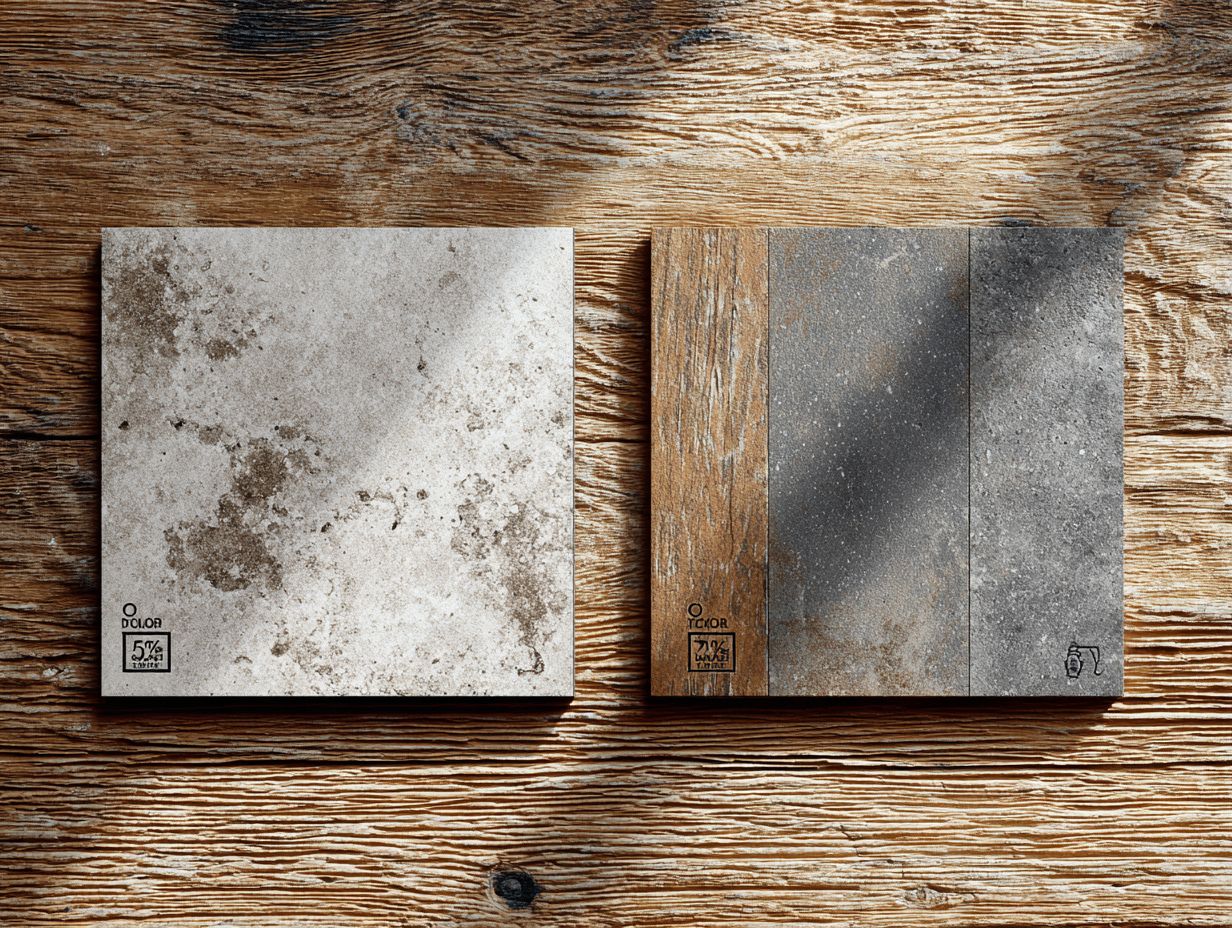
Answering common questions about porcelain and ceramic tiles can help clear up any confusion and help people make decisions. For those considering alternatives, exploring different materials such as vinyl can be beneficial (our guide on vinyl flooring wear layer and durability offers valuable insights).
Common Misconceptions
A prevalent misconception is that all ceramic tiles are suitable for outdoor use, while in reality, only specific, frost-resistant varieties are appropriate.
Another common fallacy is that ceramic and porcelain tiles are essentially the same. Porcelain tiles are thicker, absorb less water, and are more durable than other tiles, making them a better choice for high-traffic areas.
Many think all tiles are simple to keep clean, but textured ceramic tiles can hold dirt, needing more regular cleaning. Knowing these differences is important when choosing tiles for your area, especially concerning how you plan to use them, the upkeep they require, and your style choices.
Choosing the Right Tile for Your Project
Selecting the right tile depends on various factors, including intended use, aesthetic preferences, and budget considerations.
To make an informed choice, start by assessing the tile’s location.
For high-moisture areas like bathrooms, opt for porcelain tiles, which are water-resistant and durable. Think about ceramic tiles for kitchens because they have many uses and are simple to clean.
For a modern look, matte finishes can bring a stylish touch, while glossy tiles might increase brightness.
Don’t forget to evaluate the grout-color and sealing options affect longevity. Setting a budget will help narrow down choices, ensuring you get quality tiles without overspending.
Frequently Asked Questions
What is the difference between porcelain and ceramic tile in terms of composition?
Porcelain and ceramic tiles both come from clay. However, porcelain tiles use a finer clay and are baked at higher temperatures, which makes them denser and tougher.
Which type of tile is more expensive, porcelain or ceramic?
Porcelain tiles are typically more expensive than ceramic tiles due to their higher quality and durability. But, the price can change based on the brand and style.
How do porcelain and ceramic tiles differ in terms of durability?
Porcelain tiles are known for their durability and can withstand higher levels of foot traffic, heavy objects, and moisture. Ceramic tiles, while still durable, may be more prone to chipping and cracking.
Can both porcelain and ceramic tiles be used for outdoor installations?
Yes, both porcelain and ceramic tiles can be used for outdoor installations. Porcelain tiles are better for outdoor areas because they don’t soak up water as much and can handle changes in temperature better than ceramic tiles.
Are there any differences in how porcelain and ceramic tiles are installed?
Both porcelain and ceramic tiles can be installed using the same methods. But because porcelain tiles are heavier, they might need stronger glue and accurate cutting when being installed.
Which type of tile is more suitable for high-moisture areas such as bathrooms and kitchens?
Porcelain tiles are highly resistant to moisture and are therefore more suitable for high-moisture areas such as bathrooms and kitchens. They are less likely to absorb water and are easier to clean and maintain compared to ceramic tiles.
